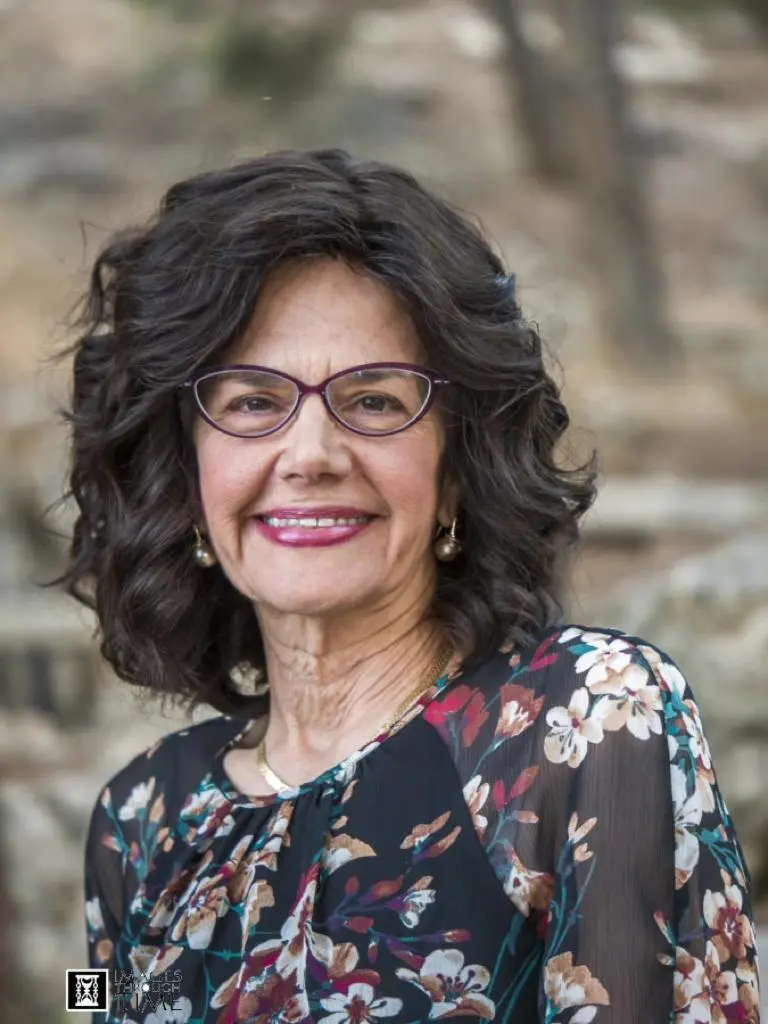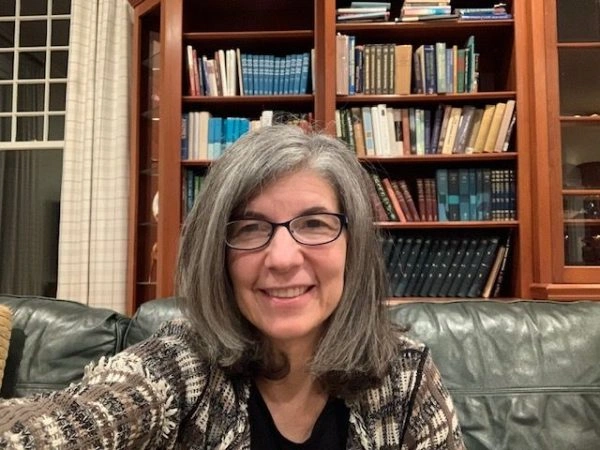Avodah Zarah 9
מַלְכוּת פָּרַס בִּפְנֵי הַבַּיִת שְׁלֹשִׁים וְאַרְבַּע שָׁנָה, מַלְכוּת יָוָן בִּפְנֵי הַבַּיִת מֵאָה וּשְׁמוֹנִים שָׁנָה, מַלְכוּת חַשְׁמוֹנַאי בִּפְנֵי הַבַּיִת מֵאָה וְשָׁלֹשׁ, מַלְכוּת בֵּית הוֹרְדוֹס מֵאָה וְשָׁלֹשׁ, מִכָּאן וְאֵילָךְ צֵא וַחֲשׁוֹב כַּמָּה שָׁנִים אַחַר חוּרְבַּן הַבַּיִת.
The Persian Empire, which ruled the world before the construction of the Temple, continued to do so for 34 years in the presence of the Temple, i.e., after the Temple was built; the Greek Empire ruled for 180 years in the presence of the Temple; the Hasmonean dynasty ruled for 103 years in the presence of the Temple; and the Herodian dynasty likewise ruled for 103 years. From this point forward, you can go and calculate the date on which an event occurred by how many years it happened after the destruction of the Temple.
אַלְמָא מָאתַן וְשֵׁית הֲווֹ, וְאַתְּ אָמְרַתְּ מֵאָה וּשְׁמוֹנִים הֲווֹ! אֶלָּא עֶשְׂרִין וְשֵׁית שְׁנִין קָמוּ בְּהֵימָנוּתַיְיהוּ בַּהֲדֵי יִשְׂרָאֵל, וְלָא אִישְׁתַּעְבַּדוּ בְּהוּ, וְאַמְּטוּ לְהָכִי לָא קָא חָשֵׁיב לְהוּ כְּשֶׁפָּשְׁטָה מַלְכוּת הָרְשָׁעָה עַל יִשְׂרָאֵל.
According to this statement of Rabbi Yosei, evidently when the Greek rule over the Jewish people ended and the Roman rule began it was 206 years before the Second Temple was destroyed, i.e., the two sets of one hundred and three years of the Hasmonean dynasty and the Herodian dynasty. But you said that when the Roman Empire stretched forth over Israel and ruled over them it was 180 years before the Temple was destroyed. This is not a contradiction, but rather, it proves that for 26 years the Romans stood faithfully with the Jewish people, honoring their agreement, and did not subjugate them. And therefore, Rabbi Yishmael, son of Rabbi Yosei, does not count these 26 years among the total years in which the evil Roman Empire stretched forth over Israel and ruled over them.
אָמַר רַב פָּפָּא: אִי טָעֵי הַאי תַּנָּא, וְלָא יָדַע פְּרָטֵי כַּמָּה הֲוָה — לִישַׁיְּילֵיהּ לְסָפְרָא כַּמָּה כָּתֵיב, וְנִיטַפֵּי עֲלַיְיהוּ עֶשְׂרִין שְׁנִין, וּמַשְׁכַּח לֵיהּ לְחוּמְרֵיהּ, וְסִימָנָיךְ: ״זֶה לִּי עֶשְׂרִים שָׁנָה אָנֹכִי בְּבֵיתֶךָ״.
§ Apropos the above baraita, the Gemara relates that Rav Pappa said: If this tanna, i.e., one who dates years in reference to the destruction of the Temple, forgot and did not know the details of the date with regard to exactly how much time had passed since the destruction of the Temple, e.g., he remembered the century but could not recall the exact decade and year, let him ask a scribe who writes official documents how many years he writes when he dates the documents. The dating system of scribes uses as its starting point the beginning of the Greek rule, 380 years before the destruction of the Temple. And let him add 20 years to the number, and in this manner he will find his number [leḥumreih]. And your mnemonic to remember this is the verse: “These twenty years have I been in your house” (Genesis 31:41).
אִי טָעֵי סָפְרָא — נְשַׁיְּילֵיהּ לְתַנָּא כַּמָּה חָשֵׁיב, וּנְבַצַּר מִינַּיְיהוּ עֶשְׂרִין שְׁנִין, וּמַשְׁכַּח לֵיהּ לְחוּמְרֵיהּ. וְסִימָנָיךְ: סָפְרָא בְּצִירָא, תַּנָּא תּוֹסְפָאָה.
Similarly, if a scribe forgot the exact year, let him ask the tanna how much time he calculates has passed since the Temple’s destruction, and he should deduct from the number twenty years, and in this manner he will find his number. And your mnemonic to remember that the tanna adds twenty to the date of the scribe, whereas the scribe deducts twenty from the number of the tanna, is as follows: A scribe deducts, while a tanna adds on [tosfa’a]. This is a play on the phrase tanna tosfa’a, which also means to teach the Tosefta, the practice of a tanna.
תָּנָא דְּבֵי אֵלִיָּהוּ: שֵׁשֶׁת אֲלָפִים שָׁנָה הָוֵי הָעוֹלָם, שְׁנֵי אֲלָפִים תּוֹהוּ, שְׁנֵי אֲלָפִים תּוֹרָה, שְׁנֵי אֲלָפִים יְמוֹת הַמָּשִׁיחַ, בַּעֲוֹנוֹתֵינוּ שֶׁרַבּוּ יָצְאוּ מֵהֶן מַה שֶּׁיָּצְאוּ מֵהֶן.
In relation to the discussion on the calculation of years, the Gemara states that one of the Sages of the school of Eliyahu taught: The world is destined to exist for six thousand years. For two thousand years the world was waste, as the Torah had not yet been given. The next set of two thousand years are the time period of the Torah. The last set of two thousand years are the period designated for the days of the Messiah, but due to our many sins there are those years that have been taken from them, i.e., such and such years have already passed and have been taken from the two thousand years that are designated for the Messiah, and the Messiah has not yet arrived. Whenever a tanna taught this baraita, he would insert the number of years that was correct for his time.
שְׁנֵי אֲלָפִים תּוֹרָה מֵאֵימַת? אִי נֵימָא מִמַּתַּן תּוֹרָה עַד הַשְׁתָּא, לֵיכָּא כּוּלֵּי הַאי, דְּכִי מְעַיְּינַתְּ בְּהוּ תְּרֵי אַלְפֵי פְּרָטֵי דְּהַאי אַלְפָּא הוּא דַּהֲוַאי.
The Gemara asks: With regard to the two thousand years of the time period of the Torah, from when are they counted? If we say that they started from the giving of the Torah until now, then there is not enough time for all of these years. As, when you examine the calculations, it is evident that from the creation of the world until the giving of the Torah there were two thousand years plus a part of this third thousand, as the Torah was given 2,448 years after the creation of the world. This would mean that the time period of the Torah encroaches upon the days of the Messiah.
אֶלָּא, מִ״וְּאֶת הַנֶּפֶשׁ אֲשֶׁר עָשׂוּ בְחָרָן״, וּגְמִירִי דְּאַבְרָהָם בְּהָהִיא שַׁעְתָּא בַּר חַמְשִׁין וְתַרְתֵּי הֲוָה.
Rather, the two-thousand-year time period of the Torah is counted from the time when it is stated about Abraham and Sarah: “And the souls that they had gotten in Haran” (Genesis 12:5), which is interpreted by the Sages as referring to the men and women who were brought closer to the Torah by Abraham and Sarah. Therefore, it was at this point that the Torah began to spread throughout the world. And it is learned as a tradition that at that time Abraham was fifty-two years old.
כַּמָּה בָּצְרָן מִדְּתָנֵי תַּנָּא? אַרְבַּע מֵאָה וְאַרְבָּעִים וּתְמָנְיָא שְׁנִין הָוְיָין, כִּי מְעַיְּינַתְּ בֵּיהּ מֵ״הַנֶּפֶשׁ אֲשֶׁר עָשׂוּ בְחָרָן״ עַד מַתַּן תּוֹרָה — אַרְבַּע מְאָה וְאַרְבָּעִים וּתְמָנְיָא שְׁנִין הָוְיָין.
How many years are missing from the two thousand year period of the Messiah, if the period of the Torah that is taught by the tanna is counted from the giving of the Torah? There are 448 missing years. When you examine the calculation from the time when it is stated about Abraham and Sarah: “The souls that they had gotten in Haran,” until the time of the giving of the Torah, there are 448 years.
אָמַר רַב פָּפָּא: אִי טָעֵי תַּנָּא וְלָא יָדַע פְּרָטֵיהּ כַּמָּה הָוֵי — לִישַׁיְּילֵיהּ לְסָפְרָא כַּמָּה כְּתִיב, וְנִיטַפֵּי עֲלַיְיהוּ אַרְבְּעִין וְתַמְנֵי, וּמַשְׁכַּח לֵיהּ לְחוּמְרֵיהּ, וְסִימָנָיךְ:
With regard to this baraita as well, Rav Pappa said: If a tanna meant to state that at his time such and such years were already lost from the two thousand years that are designated for the days of the Messiah, but he forgot and did not know the details of exactly how much time had passed, let him ask a scribe how many years he writes when he dates documents. And let him add forty-eight to the number, correcting for the century, and in this manner he will find his number. And your mnemonic for this is the verse:
״אַרְבָּעִים וּשְׁמֹנֶה עִיר״. וְאִי טָעֵי סָפְרָא — נְשַׁיְּילֵיהּ לְתַנָּא כַּמָּה קָתָנֵי, וְנִיבַצַּר מִינַּיְיהוּ אַרְבָּעִים וּשְׁמוֹנֶה, וּמַשְׁכַּח לֵיהּ לְחוּמְרֵיהּ, וְסִימָנָיךְ: סָפְרָא בְּצִירָא, תַּנָּא תּוֹסְפָאָה.
“Forty-eight cities” (Numbers 35:7). Similarly, if a scribe forgot the exact year, let him ask the tanna how many years does he teach have already been lost from the two thousand years that are designated for the days of the Messiah. And he should deduct forty-eight years from the number, correcting for the century, and in this manner he will find his number. And your mnemonic to remember that the tanna must add to the date of the scribe, while the scribe must deduct from the number of the tanna, is again: A scribe deducts, while a tanna adds on [tosfa’a].
אָמַר רַב הוּנָא בְּרֵיהּ דְּרַב יְהוֹשֻׁעַ: הַאי מַאן דְּלָא יָדַע כַּמָּה שְׁנֵי בְּשָׁבוּעַ הוּא עוֹמֵד — נִיטַּפֵּי חַד שַׁתָּא, וְנִחְשׁוֹב כְּלָלֵי בְּיוֹבְלֵי, וּפְרָטֵי בְּשָׁבוּעֵי.
§ Rav Huna, son of Rav Yehoshua, says: In the case of one who does not know which year of the seven-year Sabbatical cycle he stands in, he should add one year to the years that have passed since the destruction of the Temple in order to begin at the start of a Sabbatical cycle. And he should calculate the general years, i.e., the centuries, as Jubilee cycles, as every Jubilee concludes seven completed Sabbatical cycles of forty-nine years, and the details as Sabbatical cycles, i.e., he should divide the remaining years into seven-year Sabbatical cycles.
וְנִשְׁקֹל מִמֵּאָה תְּרֵי, וְנִשְׁדֵּי אַפְּרָטֵי, וְנַחְשׁוֹבִינְהוּ לִפְרָטֵי בְּשָׁבוּעֵי, וְיִדַּע כַּמָּה שְׁנֵי בְּשָׁבוּעַ, וְסִימָנָיךְ: ״כִּי זֶה שְׁנָתַיִם הָרָעָב בְּקֶרֶב הָאָרֶץ״.
But as the Jubilee Year itself is counted as one year of a Sabbatical cycle, he should take, from every hundred years that passed, two years, and add it to the details, i.e., the remaining decades and single years. And then he should calculate with the details by dividing them into Sabbatical cycles. And from the remainder he will know how many years in the current Sabbatical cycle have passed. And your mnemonic that two years must be deducted from every century is the following verse: “For these two years the famine has been in the land” (Genesis 45:6).
אָמַר רַבִּי חֲנִינָא: אַחַר אַרְבַּע מֵאוֹת לְחוּרְבַּן הַבַּיִת, אִם יֹאמַר לְךָ אָדָם: קַח שָׂדֶה שָׁוֶה אֶלֶף דִּינָרִים בְּדִינָר אֶחָד — לֹא תִּקַּח. בְּמַתְנִיתָא תָּנָא: אַחַר אַרְבַּעַת אֲלָפִים וּמָאתַיִם וּשְׁלֹשִׁים וְאַחַת שָׁנָה לִבְרִיאַת עוֹלָם, אִם יֹאמַר לְךָ אָדָם: קַח לָךְ שָׂדֶה שָׁוֶה אֶלֶף דִּינָרִים בְּדִינָר אֶחָד — אַל תִּקַּח. מַאי בֵּינַיְיהוּ? אִיכָּא בֵּינַיְיהוּ תְּלָת שְׁנִין, דְּמַתְנִיתָא טָפְיָא תְּלָת שְׁנֵי.
Rabbi Ḥanina says: After the year 400 from the destruction of the Temple, if a person says to you: Purchase a field that is worth one thousand dinars for one dinar, do not purchase it. It is not a worthwhile investment, as the redemption will soon come and all fields will revert to their original owners. It was taught in a baraita: After the year 4,231 from the creation of the world, if a person says to you: Purchase a field that is worth one thousand dinars for one dinar, do not purchase it. The Gemara asks: What is the difference between these two dates? The Gemara answers: There is a difference between them of three years, as the baraita adds three years. The year 400 from the destruction of the Temple corresponds to the year 4,228 from the creation of the world.
הָהוּא שְׁטָרָא דַּהֲוָה כְּתִיב בֵּיהּ
§ The Gemara relates: There was a certain promissory note in which was written






















